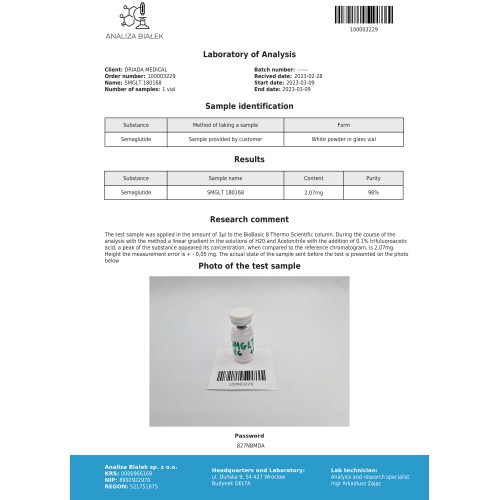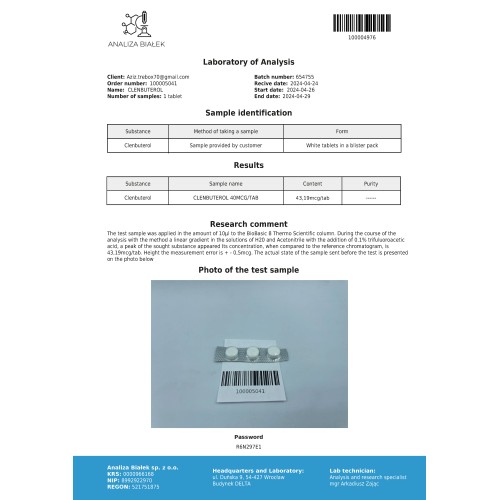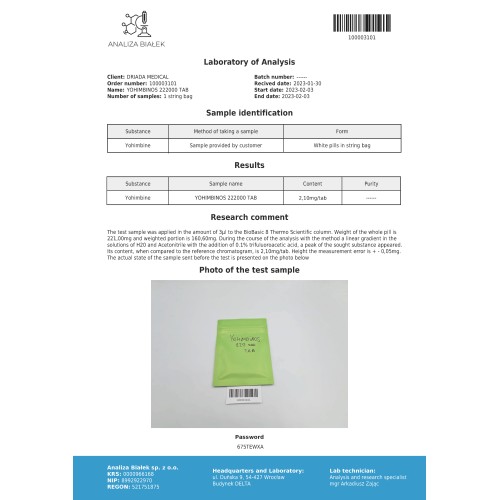
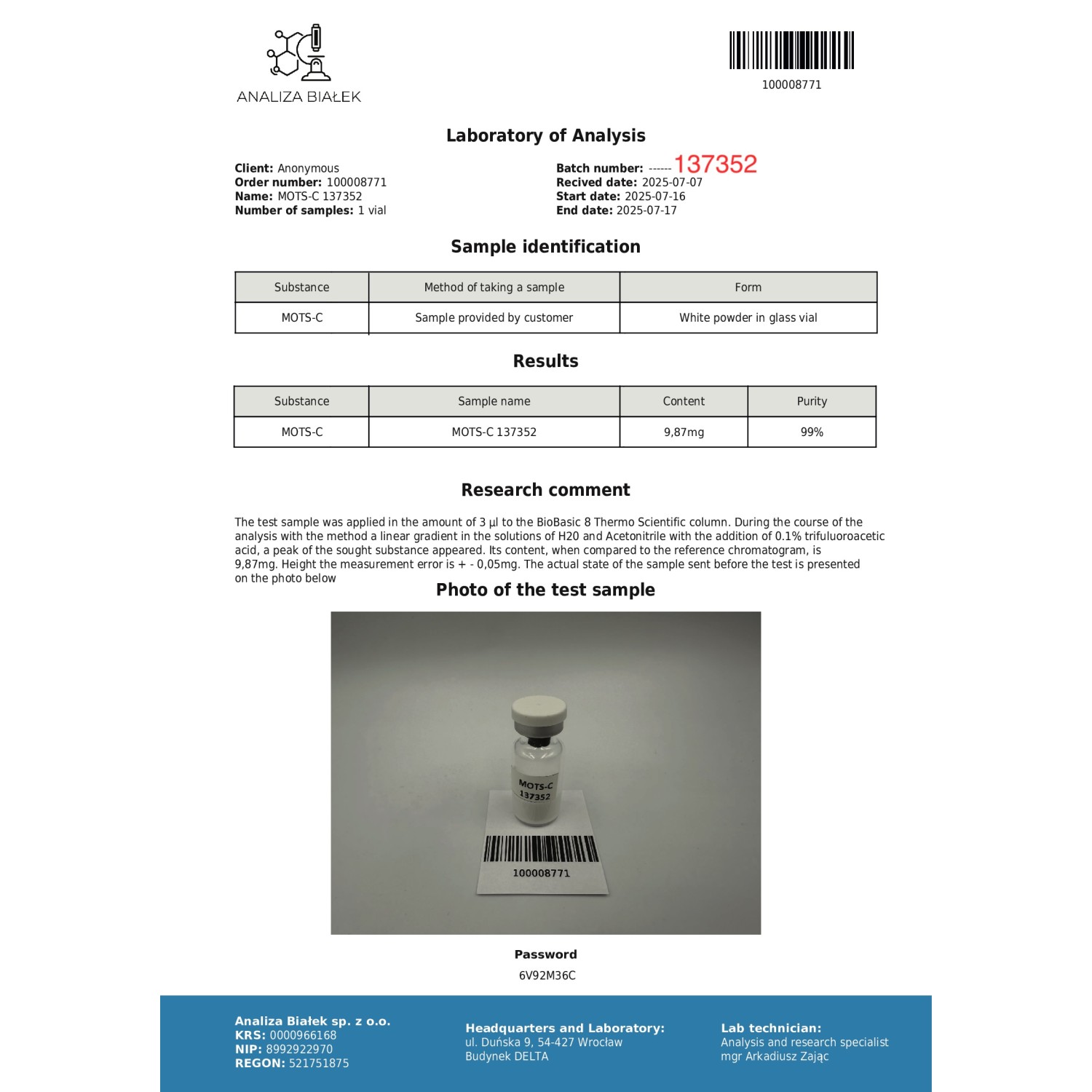


- Stock: Out Of Stock
This offer ends in:
Recommended with this product
Semaglutide is a great appetite suppressant, beloved by Hollywood stars.
View moreClen + Yohimbine cycle: A classic combination that can be
View moreClen + Yohimbine cycle: A classic combination that
View more
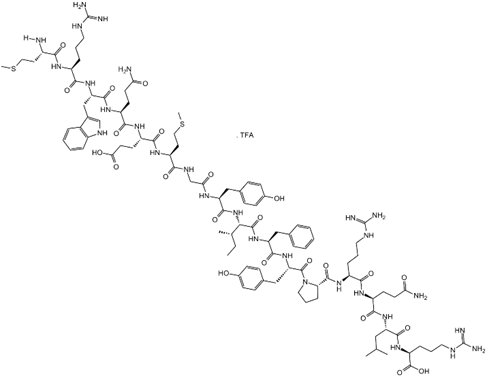
- Category: Peptide
- Purpose: Support for metabolism, energy, longevity, and fat loss
- Form: Vial with 10 mg of lyophilized powder + 1 ml ampoule of bacteriostatic water for reconstitution
- Administration: Subcutaneous injections
What is MOTS-c?
MOTS-c is a small peptide made of 16 amino acids that was discovered in 2015 during research on mitochondria. It is naturally produced in the human body and plays an important role in how the body manages energy, handles physical stress, and keeps metabolism balanced.
Today, MOTS-c is being studied for its potential to help with fat loss, appetite control, and better response to insulin. Some also use it to maintain energy during calorie restriction or intense physical activity. In addition, MOTS-c is drawing attention for its possible role in slowing down certain age-related processes and supporting overall vitality.
Although research in humans is still limited, many users have reported positive effects — including fewer cravings, steadier energy, and better recovery after exertion.
Main effects of MOTS-c
🩸 Better insulin response — helps the body absorb glucose more effectively and maintain stable blood sugar levels.
🔥 Fat metabolism support — encourages the body to use stored fat as fuel, especially during physical activity or calorie restriction.
🏃 Increased endurance — supports energy production in muscles and may reduce fatigue during exercise.
🍽️ Lower appetite — helps reduce food cravings and makes it easier to stick to a diet.
🧬 Healthy aging — supports mitochondrial function, which often declines with age.
🧘 Better recovery and resilience — helps the body recover faster from training, stress, or illness.
How to take MOTS-c?
For those interested in buying MOTS-c peptide is very important to understand how to use and correctly admister medication to avoid any problems. MOTS-c comes in a vial containing 10 mg of lyophilized powder. It must be reconstituted using the provided bacteriostatic water before use. You can read detailed instructions on how to prepare peptides and perform injections HERE.
Common dosing protocols
| Protocol | Dosage | Schedule | Duration |
|---|---|---|---|
| Low-frequency | 5 mg of MOTC-s | Every 5 days | 20 days |
| Moderate-frequency | 10 mg of MOTC-s | Three times a week (e.g. Mon/Wed/Fri) |
Typically 4–6 weeks |
| Step-up protocol | Phase 1: 2.5 mg of MOTC-s Phase 2: 5 mg of MOTC-s |
Phase 1: 3× per week Phase 2: once per week |
Phase 1: Weeks 1–4 Phase 2: Weeks 5–8 |
Precautions
- Always start with a low dose to see how your body reacts!
- Limit usage to no more than 8 consecutive weeks; take a 2–4 week break between cycles.
- Stop the cycle if you experience unusual symptoms like extreme tiredness, poor concentration, or persistent discomfort.
- MOTS-c may gradually lower folate (5-MTHF) levels inside cells. While this isn’t fully confirmed, it's something to keep in mind during long-term use. Low folate can impair DNA repair, increase oxidative stress, and disrupt methylation — which may lead to fatigue, brain fog, or elevated homocysteine levels (a risk factor for cardiovascular problems)
Possible side effects
- Redness, swelling, or irritation at the injection site
- Mild fatigue
- Sleep disturbances
- Appetite changes
- Digestive discomfort (bloating, soft stool, or constipation)
- Headache
- Dizziness
- Allergic reactions (rare)
- Hormonal fluctuations (may affect cortisol or insulin)
- Electrolyte imbalance
- Mood changes
How to store?
- Keep the product refrigerated at 2–8°C (36–46°F).
- Do not freeze.
- Protect from light.
- Avoid frequent temperature changes (e.g., repeated removal from the fridge).
- Once reconstituted, keep refrigerated and use within approximately one month.
How does MOTS-c work?

To understand how MOTS-c peptide works, it is important to first understand mitochondria. Mitochondria are tiny structures found inside almost all cells in the body. They generate energy by breaking down nutrients and converting them into ATP, the main fuel for cells. Think of mitochondria as the power plants of cells — they keep everything running by providing the energy cells need to perform their functions.
Over time, mitochondria can become less efficient due to factors such as aging, stress, and poor diet. This inefficiency leads to reduced energy production and increased oxidative stress, which can cause cellular damage. MOTS-c helps counteract this by improving mitochondrial function.
MOTS-c is a special peptide because, unlike most proteins and peptides, it is encoded not in the cell nucleus, but in the mitochondria. They have their own DNA (mtDNA), which is passed down only from the mother and which is different from the DNA inside the nucleus of the cell (nuclear DNA). When MOTS-c is produced in the mitochondria, it does not stay there but moves around the cell, transmitting signals and helping the body use energy more efficiently and cope with stress. In essence, it is a built-in mechanism in our cells that keeps them functioning and helps the body adapt to stress.
Here are the key ways MOTS-c works:
-
Activating AMPK (Energy sensor). Our body has a special enzyme AMPK (AMP-activated protein kinase) that monitors the energy level in cells. If energy becomes low, it switches on the economy mode and at the same time helps the body to get more fuel. MOTS-c activates this process, which leads to:
- More glucose in cells — sugar from the blood enters the cells faster and is converted into energy.
- Fats are burned faster — the body begins to use fat more actively as a source of energy.
Thanks to this, cells do not experience a lack of energy even during stress, physical activity or lack of food.
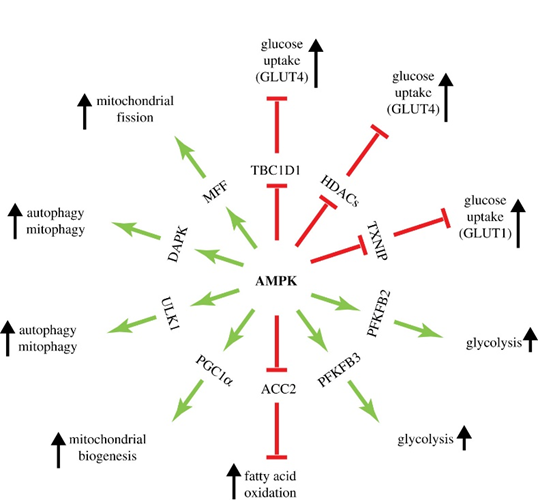
- Modulating the folate cycle. MOTS-c affects the folate cycle, an important process that helps cells create the building blocks of DNA and RNA (nucleotides). These substances are necessary for cell renewal, repair, and normal functioning of the body.
When the body is under stress, such as intense exercise or a lack of calories, cells require more nucleotides to repair damage and maintain their function. MOTS-c helps the folate cycle work more efficiently so that cells can:
- Recover faster from stress.
- Create new cells for tissue renewal.
- Protect DNA from damage.
Thus, MOTS-c helps the body adapt to stress, maintain energy and keep cells healthy.
- Stimulating mitochondrial biogenesis. Inside every cell there are mitochondria, small “power plants” that produce ATP (the main source of energy). The more mitochondria in a cell, the more energy it can produce. MOTS-c helps the body create new mitochondria. This process is called mitochondrial biogenesis. How it works:
- MOTS-c triggers the production of mitochondrial proteins and DNA, which leads to the formation of new mitochondria.
- In muscle cells, which need a lot of energy, this is especially important for endurance and recovery after exercise.
- More mitochondria means less fatigue, better energy use, and faster strength gains.
- Reducing inflammation. Long-term inflammation is one of the causes of many health problems, such as diabetes, obesity and heart disease. MOTS-c helps the body regulate the inflammatory process, reducing the harmful effects on tissues. How this process works:
- MOTS-c reduces the level of inflammatory molecules (TNF-α, IL-6, IL-1β), which cause chronic inflammation.
- Increases the amount of anti-inflammatory substances (IL-10, TGF-β), which help the body calm inflammation and restore damaged tissues.
- Thanks to this balance, MOTS-c protects cells from destruction, maintains a healthy metabolism and helps to recover faster from stress, injuries and age-related changes.
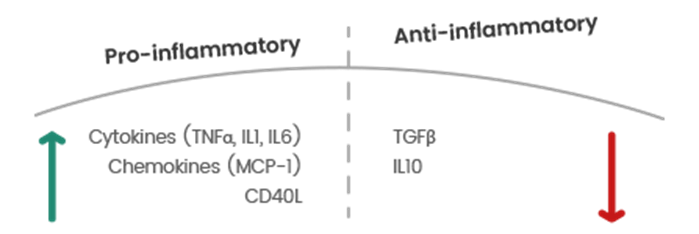
- Adaptive gene regulation. Cells are constantly adapting to changes in the body, such as a lack of nutrients or high energy demand. MOTS-c regulates the activity of certain genes, helping cells adapt to such conditions more quickly.
- MOTS-c affects the activity of genes that control metabolism, cell growth, and stress response.
- It interacts with special proteins (transcription factors) that turn on or off the right genes in response to external conditions.
- This helps cells use resources sparingly, maintain energy balance, and protect themselves from damage in difficult conditions.
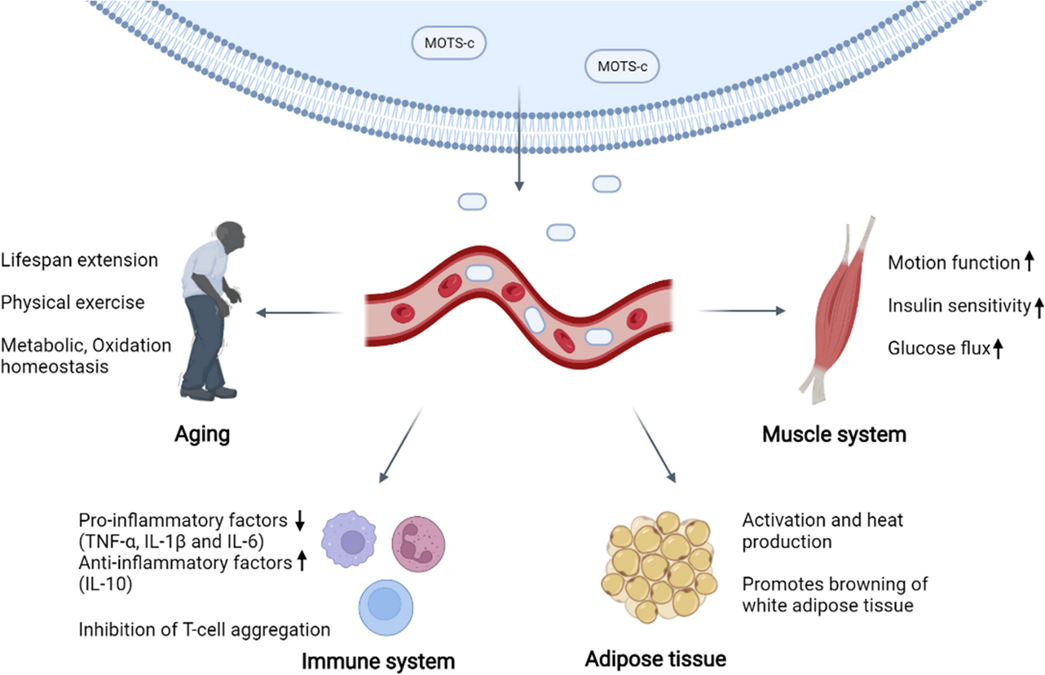
What does science say?
Over the past few years, there have been many studies and experiments on the effects of MOTS-c on living organisms and on various factors, ranging from metabolic health to aging. Below, we will look at a couple of recent articles that have documented the positive effects of this peptide.
🧪 MOTS-c and metabolic disorders. In 2021, a study published in the scientific journal Nature Communications examined the effects of MOTS-c on exercise performance and muscle homeostasis in aging mice. Increasing MOTS-c levels improved endurance and muscle function in aged mice. Although the study was conducted in aging models, the results indicate that under stress, MOTS-c levels are reduced, and increasing them leads to restoration of metabolic functions that stress can impair.
Key result: Mice treated with MOTS-c demonstrated enhanced endurance and muscle function compared to untreated controls.
🧪 Anti-aging effects. A 2022 study examined the role of MOTS-c in aging by measuring its effects on mitochondrial function in aged mice. The results showed that after increasing MOTS-c levels mitochondrial efficiency started to restore, markers of oxidative stress restored, and the lifespan of mice increased by ~10%.
Key result: Treated mice have better physical performance and endurance compared to untreated older mice.
🧪 MOTS-c levels in type 1 diabetes patients. A 2023 study published in Diabetes & Metabolism Journal examined MOTS-c levels in patients with type 1 diabetes compared to healthy individuals. The study found that MOTS-c levels were significantly lower in type 1 diabetes patients, suggesting a potential role of MOTS-c in autoimmune diabetes.
Key result: Lower MOTS-c levels are associated with poor glycemic control.
🧪 Plasma MOTS-c levels in obese children and adolescents. A study in the journal European Society for Paediatric Endocrinology (ESPE) explored plasma MOTS-c levels in obese Chinese male children and adolescents aged 5–14 years. The researchers observed a significant 20.3% reduction in plasma MOTS-c levels in obese participants compared to healthy controls.
Key results: Participants with elevated BMI had low levels of MOTS-c, suggesting a link between the low level of peptide and obesity. ****The study discusses the potential of MOTS-c in the treatment of obesity and the prevention of type 2 diabetes
You may have noticed that there was no mention of studies examining the effects of MOTS-c on humans. Yes, that’s right, there have been no clinical trials in which this peptide has been administered to humans. All available experimental work has been conducted on animals. These studies have revealed very interesting and statistically significant effects, but mouse tests still don’t give us a complete picture of how the peptide affects the human body. However, there are studies that have measured MOTS-c levels in the blood of humans and analyzed the correlation between the peptide level and such indicators as obesity, insulin sensitivity and other metabolic disorders. These studies have made it clear that low MOTS-c levels are indeed associated with aging and other negative factors such as diabetes and obesity.
Why are there no clinical trials on humans yet? MOTS-c is a very new discovery in the field of medicine, and clinical trials on people are always a very long and expensive process, so not enough time has passed yet. Currently, a clinical trial is underway on the peptide CB4211, which is a synthetic analogue of MOTS-c. CB4211 is being tested in humans for the treatment of non-alcoholic steatohepatitis (NASH) and obesity, so it is possible that we will soon see this analogue on pharmacy shelves. Although the research is still in progress, many people are already interested in the availability and MOTS-c peptide price, hoping for more affordable options once clinical approval is obtained. We really hope that soon we will be able to get more official scientific data on the long-term effect of MOTS-c and its analogue, so that we can have a more complete picture of its effects and risks.
Despite the promising potential, we still want to warn you that the long-term risks of the drug have not yet been studied, so you should always be aware of the risks. That’s why we encourage you to approach its use with awareness and caution.
FAQ
Does MOTS-c work for weight loss?
Yes, this is one of the most common reasons why people want to buy MOTS-c peptide for sale. The peptide has the ability to reduce weight by improving metabolic functions, without a large risk of side effects.
Does MOTS-c build muscle?
No, MOTS-c is not an anabolic agent and does not directly help to build muscle tissue. However, this drug can help you improve your workout performance and reduce recovery time, which will definitely will have a positive effect on your results.
Is MOTS-c safe to take?
There are not enough scientific and clinical studies on humans to be sure that the drug is safe for long-term use. But analyzing the reviews of people who have taken this drug, it seems that this peptide is quite safe if you follow the dosages and do not exceed the period of use.




